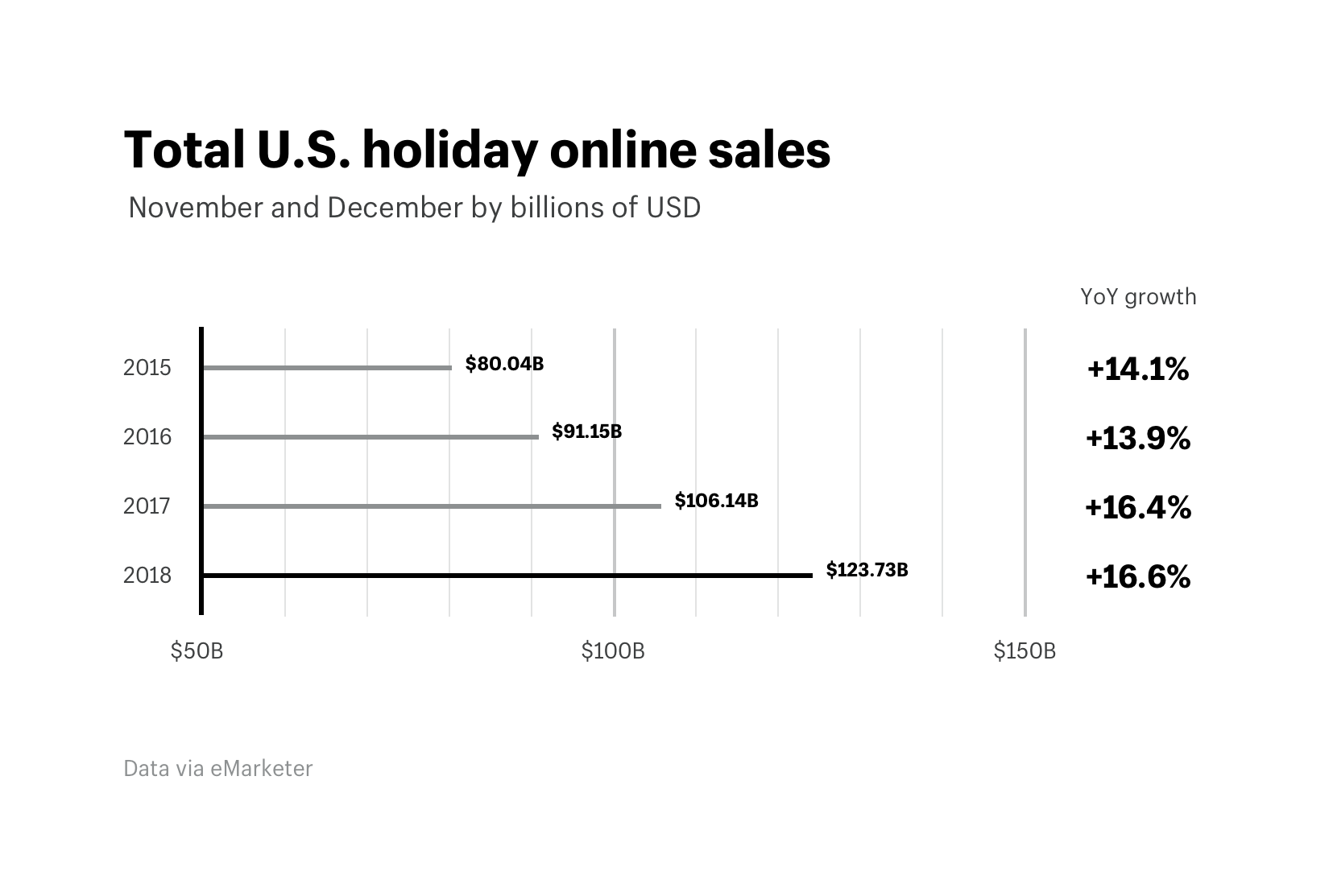COVID-19, despite all of its detrimental impacts, has signaled a positive trend within the eCommerce market with the witnessed growth of 4 to 6 years ahead of its time. The eternal quarantine has demanded small and medium enterprises (SME) to scale up their business to meet the increasing needs of customers who are unable to go to physical stores.
As a result, store owners have to keep an eye on multiple tasks at the same time to keep the business afloat. Considering the social distancing restriction and the limited resources, it feels impossible for SMEs to streamline operations and increase efficiency. However, there’s an answer to it, that is automation.
So what is eCommerce automation?
In short, automation is the process of converting your daily manual tasks within your eCommerce small business into automated work.

Source: Shopify
During Black Friday sales 2018, Shopify recorded $123.73 billion sales with a 2-billion pre-scheduled thanks to eCommerce automation. Astonishingly, one store even sold out their most popular items in 2 minutes.
Automation has become an emerging trend in the eCommerce market.
For any small business, automation can be a game-changer. In a small business, a small number of employees often take over a huge amount of workload. During high seasons, a marketing executive might be in charge of contacting logistics partners, while an accountant might as well take responsibility for fulfilling packaging. Besides causing fatigue and inefficiency, it takes up time for more important tasks. This is where automation comes to the rescue. With automated applications installed in your platform, you can save up time and resources on repetitive tasks to come up with ambitious strategies that may entirely transform your business.
Let’s look into the 2 most important aspects of business where automation proves efficiency.
1. Inventory & Order Management
Why do you need automation?
The operation management involves the process of inventory and order management as well as fulfillment and delivery to customers. A small business can often get away easily with simple manual steps because there’s not a high volume of orders yet. However, as the business grows, these repeated tasks become massive and might cost the organization the time needed to optimize the revenue.
After having all your products in order, delivering to the customers is another challenge. As people shift to online shopping, your customers can come from any corner of the world. With such large-scale order, a disruption in the supply chain would not only cost you revenue loss but also decreased credibility in your brand.
Therefore, small store owners always have to pay attention to the logistics, fulfillment or inventory list, be it the package placement in the warehouse or the delivery status. Although being small routine tasks, it shouldn’t be anyone’s concern all the time. Thus having an automation app would be an efficient means for small business to get the work done.
Ways to automate your inventory and order management
Product inventory management is the first go-to
An automated inventory management system allows store owners to add, edit, delete and transfer their inventory in real-time. This keeps you away from human error while updating a lot of data in a spreadsheet every day. Some software like Atom8 also provides you with real-time reports of how much inventory your suppliers have and how much you are distributing across channels. This enables small and medium entrepreneurs to make smarter decisions about their business.
Beware of out-of-stock items
Being a small business, it is likely that you have to spend the whole day scanning the inventory list to identify low-stock items and reordering supply on your own. By employing automated software, you can rather set up a process on your platform’s Inventory Head to send an alert when your stocks hit a certain threshold. Shopify offers a centralized inventory system that allows inventory tracking, history viewing, and count adjustments. This helps prevent customers from feeling disappointed when they can’t bag the product they’re interested in. It also allows them to get notifications when it’s back in stock.

It never hurts to keep track of the delivery status
Your small business can rely on technology to conduct the procedure from placing a new order to getting it delivered. Many platforms have integrated with fulfillment services like ShipStation or Vend, allowing them to track the order as soon as it is placed. The company therefore can get real-time insight into the order status and delivery record. Having such a streamlined shipping system allows you to cater to a larger volume within a lesser time, thus fostering the business revenue.
2. Marketing Management & Customer Service
Why do you need automation?
Email marketing and social media platforms are among the best ways to communicate with your customers and build up a strong relationship with them. Research has shown that omnichannel marketing automation can produce 250% higher purchase and engagement rates than single-channel strategy. SMEs often get into trouble cross-referencing and pooling data together because of mundane sources of information.
In addition, customer service is an indispensable part of sustaining your business. 54% of customers are likely to purchase more products from a brand after receiving positive customer support. However, this has never been a simple task.
Higher business growth means more customers. Good customer service requires active communication across multiple channels. Therefore you probably need to have sufficient human force available anytime to respond to your customers. If you’re dealing with hundreds of messages a day, you may end up missing out on some requests. By the time you get back to your customer, they have already switched to other brands.
How to avoid these?
You can start by setting up a workflow that integrates your favorite marketing and customer support apps and automates a part of your work.
Optimize data processing is the first-and-foremost step
Let us begin with the most tedious part of uploading the customer data. Many business owners don’t really know what information they need from their customers. Here are some of the most used data for SME: name, email address, location, date of birth, and purchase history. Not only is data ready to be accessed anytime, but it also prevents your business from consequences of human errors. While preventing an error will cost an organization $1, correcting an error already made will cost $10, and allowing an error to stand raises the cost to $100. Clearly, automatic data processing helps save up a lot of your money.
Personalize, personalize, personalize
Your customers will never take a look at your content if they find it irrelevant to them. Therefore, your email marketing needs to be tailored to every individual shopper. Yet many marketers often find themselves going back and forth among different platforms, manually collecting data and personalizing every single email before sending it out. By automatically retrieving information from the database, you can run a specific discount program on their birthday. This will foster the sense of connection with your brand as the customer feels that they are cared about.
Integrate with email marketing platforms
By integrating MailChimp, Gmail, Salesforce, Hubspot, Zoho, and other apps that you use for email marketing to your store (either Shopify pos, BigCommerce pos, WooCommerce pos, or Magento pos), a thank you letter will be immediately handed over to the customers when they complete an order. You no longer have to manually compile information and fill in the customer’s name at the top of the message. This automation enables small business owners to focus more on their content and performance and less on how they should be distributed.

Serve the best of your existing customers
People come and go. Yet it is a lot easier for you to engage with someone you already know than with a stranger. Software such as Alloy or Arigato Automation even automatically categorizes and tags customers based on their demographics, source of traffic, and channels they purchased. This data can be used to set up discount programs for loyal customers or follow up with product recommendations.
Risk management can save you from scammers
Sometimes, your might receive an order with suspiciously high value. In this case, the automation system will temporarily suspend the order and send an alert to the team. Then your staff can double-check if something goes wrong before following up.
Make the most out of your CRM
Imagine you spend the whole morning scrolling over the inventory list, updating prices, and tracking delivery status, leaving customers on hold with confusion about your product, unsatisfied consumers will soon turn to your competitors, causing you a revenue loss. Now automated chat service will provide your customers with shopping assistance without acquiring direct contact with your staff. In the case of baffling requests, it will store data within your CRM tools like Hubspot or Salesforce and add one of your team members to the conversation.
Conclusion
One final note for store owners. While automating the whole business might be expensive and impossible, you can start with employing automation apps within parts of your business. This helps remove repetitive tasks, boost productivity and optimize revenue.








